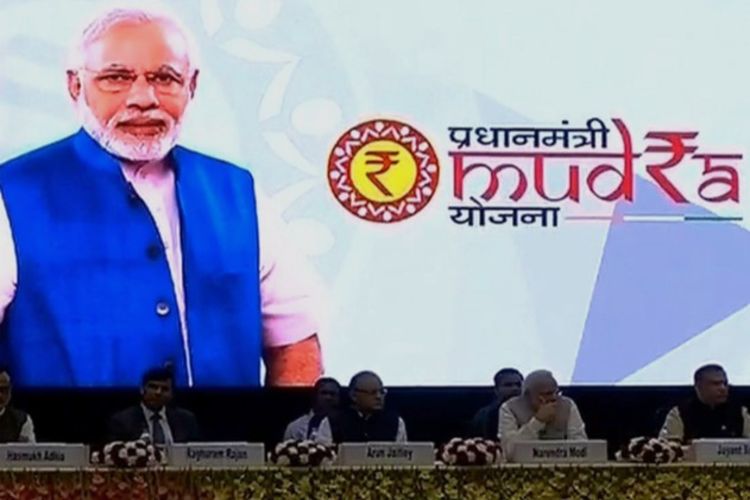
In April 2025, the Pradhan Mantri Mudra Yojana completed a decade, marking a significant milestone for one of the government’s most ambitious financial inclusion initiatives. Launched in 2015 with the mission of “funding the unfunded,” the scheme has dramatically reshaped the credit landscape for micro and small entrepreneurs across the country.
Over the past 10 years, PMMY has facilitated more than 52 crore loan accounts and disbursed a staggering Rs 32.4 lakh crore. The scheme’s wide reach and impact have drawn praise, especially for empowering women and underrepresented communities, while strengthening the backbone of India’s micro, small, and medium enterprises (MSME) sector.
READ | Trump’s tariff threat puts Indian pharma on edge
The scale of disbursements under PMMY reflects not only the latent demand among microentrepreneurs but also the willingness of lenders—supported by the Credit Guarantee Fund for Micro Units—to extend credit without traditional collateral. Data shows that over 10 crore of these accounts were availed by first-time borrowers, underscoring the scheme’s role in seeding new businesses rather than merely refinancing existing ones.
Expanding the frontiers of financial inclusion
While PMMY began as a financial inclusion initiative, it has evolved to target economically weaker states, ensuring credit reaches those who need it most. Today, the scheme accounts for nearly one-fifth of total MSME loan disbursements.
Notably, nearly half of MUDRA loan account holders belong to Scheduled Castes and Scheduled Tribes, with another 35% from Other Backward Classes. Women dominate the scheme, holding over two-thirds of all accounts. This focus has had measurable outcomes—states with a greater share of women-led MSME loans under PMMY have also reported higher employment in women-owned enterprises.
Bihar leads the country with 4.2 crore women MUDRA entrepreneurs, followed by Tamil Nadu with 3.7 crore. Analysis by the State Bank of India reveals that underdeveloped regions such as Bihar, Uttar Pradesh, Odisha, and the North-East have seen disproportionately high gains, thanks to targeted credit support for minority and women entrepreneurs. These trends point to positive outcomes in economic empowerment and greater participation in the labour force.
Signs of growth and formalisation
Access to easy credit has allowed micro units to grow and transition from survival mode to scale-up. A key indicator is the shrinking share of Shishu loans—the smallest loan category. In FY2016, 93% of all PMMY loans fell into this category; today, that figure is nearly halved, suggesting businesses are progressing to larger loan brackets like ‘Kishor.’ Moreover, the average loan size has tripled over the decade, reaching Rs 1.05 lakh.
The scheme also played a vital countercyclical role during the COVID-19 pandemic. As part of the Aatmanirbhar Bharat package, the government extended a 2% interest subvention on Shishu loans, disbursing Rs 677 crore in relief. This helped curb defaults, safeguard livelihoods, and sustain local demand at a time when MSMEs were under immense stress. Experts have lauded the scheme’s ability to transform wage earners into job creators.
Persistent challenges to MUDRA loan scheme
Despite its achievements, PMMY is not without its flaws. Access to formal credit continues to be a challenge, especially in rural areas where informal moneylenders still dominate. Among small and marginal farmers, 41% still rely on informal sources for credit—highlighting the continued gap in institutional finance.
There are also signs of regional imbalance. In 2021–22, just 10 districts accounted for over Rs 26,000 crore in sanctioned loans—roughly equal to what the bottom 318 districts received. This skewed distribution raises concerns about equity in credit deployment. Leakages and misuse of funds due to inadequate monitoring remain persistent issues.
A major stumbling block is the limited financial literacy among beneficiaries. With only 27% of India’s population deemed financially literate, many first-time borrowers struggle to manage their loans effectively. Without complementary support—such as financial education, digital training, and business advisory—many entrepreneurs risk falling into debt traps.
Strengthening the foundation
As PMMY enters its second decade, experts are calling for a strengthened ecosystem to support borrowers through the loan lifecycle. Member Lending Institutions (MLIs) could play a more active role in helping borrowers with good repayment records by offering structured services such as business planning, digital skills, and access to market platforms.
The upcoming Unified Lending Interface (ULI), being piloted by the Reserve Bank of India, shows promise. Early trials have enabled faster loan disbursals—averaging Rs 9 lakh—to MSMEs using digital infrastructure. The adoption of the Account Aggregator framework by NBFCs is another step toward reducing friction in credit access.
To fully realise PMMY’s potential, the government must go beyond credit disbursal. Building a robust support system that includes financial literacy programmes, bookkeeping assistance, and guidance in navigating tax and registration formalities will be essential. A nationwide financial literacy push covering budgeting, credit management, investment, and digital finance can help borrowers avoid missteps and grow sustainably.
An overhaul of the MUDRA scheme should focus on expanding its scope, strengthening credit guarantee mechanisms, and making financial handholding a core component. PMMY has laid a strong foundation. With the right reforms, it can become a cornerstone of inclusive economic growth for decades to come.
